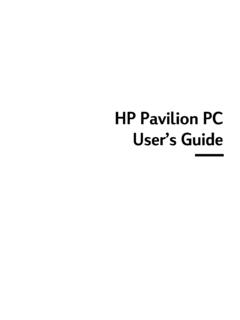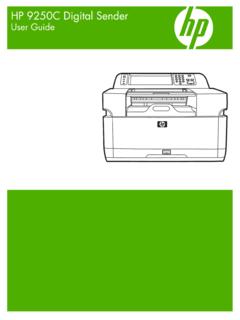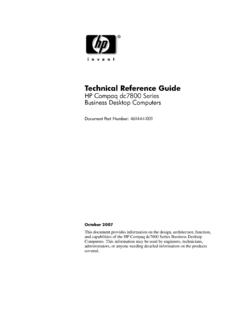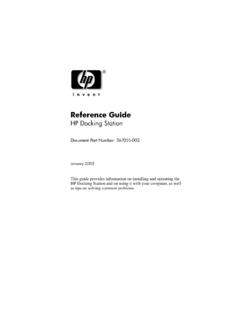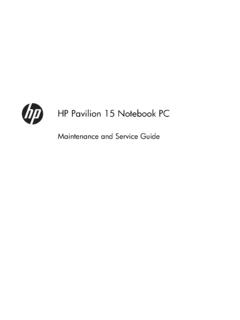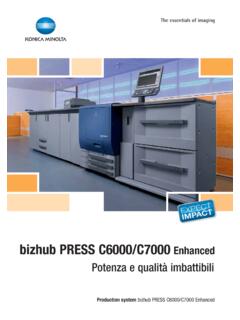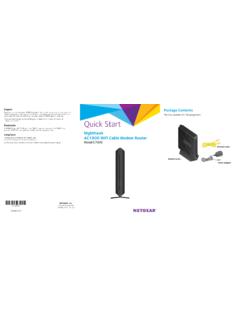Transcription of HP BladeSystem c-Class enclosure
1 HP BladeSystem c-Class enclosure technology brief 2. Overview of HP BladeSystem c7000 enclosure .. 3. HP Thermal Logic technologies .. 5. Active Cool fans .. 5. HP PARSEC 6. PARSEC at the server 9. Instant Thermal Monitoring .. 10. Power .. 10. Pooled power .. 11. Dynamic Power Saver mode .. 12. Power Regulator and power workload balancing .. 13. HP BladeSystem Power Sizer .. 14. I/O Infrastructure and interconnect options .. 14. Switches and pass-thru modules .. 15. Server blades .. 16. Storage blades .. 16. Mezzanine cards.
2 17. Virtual Connect .. 18. Fabric connectivity and port 18. Onboard Administrator .. 21. Insight 22. 23. Summary .. 24. Appendix A. Acronyms in 25. Appendix B. Fan and server population guidelines .. 26. For more 28. Call to action .. 28. Abstract As server, storage and network technologies have changed, traditional rack-mounted infrastructure solutions have generated increased complexity of both infrastructure management and physical data center deployment. The HP BladeSystem c-Class enclosure is an evolution of the entire rack-mounted infrastructure.
3 It consolidates and repackages all the supporting infrastructure elements compute, storage, network, and power into a single rack-in-a-box that accelerates the integration and optimization of the data center. This technology brief provides an overview of the HP BladeSystem c-Class enclosure , including Thermal Logic power and cooling technologies and interconnect options. This technology brief assumes the reader is familiar with HP ProLiant server technology and has some knowledge of general BladeSystem architecture.
4 For more information about the infrastructure components, see the HP website at 2. Overview of HP BladeSystem c7000 enclosure The HP BladeSystem c7000 enclosure , announced in June 2006, is the first enclosure implemented using the BladeSystem c-Class architecture. It is optimized for enterprise data centers. It is designed to fit into standard size HP and third-party racks, and to accommodate the c-Class form-factor server/storage blades and interconnect modules. HP expects to release other enclosure sizes in the future that will meet those same requirements while being optimized for other computing environments, such as remote sites or small businesses.
5 More information on c-Class architecture is available in the technology brief entitled HP BladeSystem c-Class architecture on the HP technology website at The BladeSystem c7000 enclosure provides all the power, cooling, and I/O infrastructure needed to support modular server, interconnect, and storage components today and throughout the next several years. The enclosure is10U high and holds up to 16 server and/or storage blades plus optional redundant network and storage interconnect modules. It includes a shared, 5 terabit per second high- speed NonStop midplane for wire-once connectivity of server blades to network and shared storage.
6 Power is delivered through a pooled-power backplane that ensures the full capacity of the power supplies is available to all server blades. Figure 1. HP BladeSystem c7000 enclosure side view The HP BladeSystem c7000 enclosure has a fully redundant design with redundant interconnections between servers and interconnect modules. The enclosure contains a NonStop signal midplane and a power backplane that have no active components. The enclosure is available with a choice of single- phase or three-phase power subsystem, depending on the data center power infrastructure.
7 The c7000 enclosure can be populated with the following components: Up to 8 full-height (FH) server blades or up to16 half-height (HH) server and/or storage blades per enclosure 3. Up to eight interconnect modules supporting a variety of network interconnect fabrics such as Ethernet, Fibre Channel (FC), InfiniBand (IB), Internet Small Computer System Interface (iSCSI), or Serial-attached SCSI (SAS) simultaneously within the enclosure Active Cool fan kits for a maximum of ten fans Up to six power supplies Redundant Onboard Administrator (OA) management modules (optional active-standby design).
8 All devices mentioned above are customer replaceable and hot-pluggable. Figure 2. HP BladeSystem c7000 enclosure front view Figure 3. HP BladeSystem c7000 enclosure rear view 4. HP Thermal Logic technologies Thermal Logic is the term that HP uses to define the mechanical design features, built-in intelligence, and control capabilities throughout the BladeSystem c-Class that enable IT administrators to make the most of the power and thermal environments. HP Thermal Logic technology in the c-Class enclosure requires up to 30 percent less airflow and up to 50 percent less power for cooling than the equivalent number of rack servers while the c-Class components take up less rack space.
9 It provides an instant view of power usage and temperature at the server, enclosure , or rack level. In the future Thermal Logic technology will include the ability to automatically adjust power load, workload and thermal controls to maximize performance, power and cooling capacity for each unique environment. HP Thermal Logic technology encompasses the following elements and capabilities: Active Cool fans Parallel Redundant Scalable enclosure Cooling (PARSEC) design Instant Thermal Monitoring Pooled power for true N+N power redundancy Dynamic Power Saver mode Power Regulator Power workload balancing Active Cool fans Quite often, dense, full-featured, small form-factor servers use very small fans designed to provide localized cooling in the specific areas needed by the server blade.
10 Because such fans generate fairly low airflow (in cubic feet per minute, or CFM) at medium back pressure, a single server often requires multiple fans to ensure adequate cooling. Therefore, installing many server blades together in an enclosure , with each blade containing several fans, can result in a significant amount of cost and space overhead. A second solution for cooling is to use larger, blower-style fans that can provide cooling across an entire enclosure . Such fans are good at generating CFM, but they typically require higher power input, take up more space, make more noise, and must be designed for the maximum load in an enclosure .
